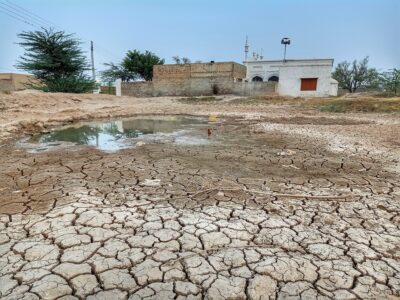 It’s not often that when we purchase food from a bodega or grocery store that we consider where it came from. Is my apple from New York, Washington, or China? Were my tomatoes grown in Florida, California, or Mexico? Whose hands planted and picked them? Why did this planter choose this variety?
It’s not often that when we purchase food from a bodega or grocery store that we consider where it came from. Is my apple from New York, Washington, or China? Were my tomatoes grown in Florida, California, or Mexico? Whose hands planted and picked them? Why did this planter choose this variety?
Wherever our food comes from, it has traveled over a distance to reach us in our homes. If those tomatoes were grown in your backyard, they might only have a traveled a few feet. If they were grown in Mexico, they traveled many hundreds — if not thousands — of miles to reach you. According to the International Institute for Environment and Development and Oxfam, food in the U.S. in 2004 traveled an average of 5,120 miles from farm-to-fork. While internationally most of that food is shipped by boat — a relatively carbon-efficient method of transport — domestically most produce is shipped via truck. A 1999 study by researchers at UC Fresno found that more than 485,000 truckloads of produce left the state every year and traveled anywhere from 100 to 3,100 miles to reach their destination.
The consequences of where our food comes from on the climate are significant, because the longer our food travels, the more carbon was emitted to transport it. We can think of the distance food travels to reach us in terms of food miles.
The concept of food miles was developed in the early 1990s by the UK NGO Sustainable Agriculture, Food, and the Environment (SAFE). Since then, food miles have become an important tool in considering the environmental impacts of our eating choices. However, we’ve also come to understand some of the ethical limitations of using food miles as a single indicator for environmental sustainability.
Food transportation only accounts for a small percentage — around 10% — of the carbon emissions of agriculture. As I’ve written before, agricultural emissions are also intimately tied to deforestation, cattle-raising, and industrial processing. If you eat fresh tomatoes in the winter, for example, they either had to be shipped over longer distances from warmer climates, or grown in an energy-intensive greenhouse setting. This complicates our understanding of food miles, as we also need to take into consideration the oil or coal that was extracted and burned to power that greenhouse, or used to produce chemical fertilizer. Even organic food, while less carbon-intensive in terms of agricultural inputs, can be less environmentally sustainable if it has to be processed, refrigerated, and shipped over a long distance. Food miles are not everything.
In a fascinating 2009 guidebook produced in association with Oxfam, the IIED proposes, instead, the idea of fair miles. They looked at all of the ethical implications of eating locally in the UK, the world’s largest importer of food via airfreight. The lessons of that report are certainly applicable to our situation here in the U.S. as well.
Understanding the environmental — and human — impact of food consumption involves a number of processes: the inputs of feed, fertilizer, pesticide, and seed; cultivation; processing, packing, and manufacture; distribution through catering or retail; home storage, consumption, and waste disposal. The summation of these processes is sometimes expressed as the lifecycle of the food supply chain.
But food’s effects on the environment are not independent of human/social considerations, either. This is perhaps one of the really great strengths of the IIED guidebook — the understanding that in much of the developing world, your purchase of green peppers from Guatemala could mean the difference between local farmers having an income or being unable to feed their family. Often at the mercy of global markets, supporting farmers in the developing world by purchasing non-local could have an ethical benefit. Consider also that inputs in the developing world for agriculture often have a lighter ecological footprint — less machinery, fewer chemical inputs — and our picture of ethical food sourcing is further complicated.
That’s not to say that all food should be sourced from the developing world. Indeed, farmers in the U.S. have a hard enough time making ends meet as it is. (And growing up in a rural Virginian community, I can attest to that!) Buying local can benefit your local community and farmers, even if the ecological footprint is slightly larger.
So — eating ethically has a variety of dimensions to consider. Locavorism — for all its tremendous benefits — is not a panacea. Nor is eating, for lack of a better term, globally. Eating seasonally is a good way to ensure that carbon outputs from heating greenhouses is reduced, even if those tomatoes are tantalizing in Februrary. Eating varietally — varieties of produce that aren’t produced industrially or commercially — can have significant benefits in terms of biodiversity and historical heritage. And decreasing the amount of meat we consume has a beneficial effect on the environment.
But despite the complexity of choosing to eat ethically, it is by no means impossible, especially if growers and distributors provide the consumer with the tools and information necessary to make an informed decision. Of course, a lot of that information can be gleaned from the farmer at your local farmer’s market or CSA — a relationship between producer and consumer that is, indeed, invaluable. Supermarkets, especially in the E.U., are expanding transparency in food sourcing, and some supermarkets are even experimenting with labeling their foods with its carbon footprint.
To paraphrase the astute conclusion of the IIED guidebook: carrots from Syracuse and green beans from Mexico can be a recipe for equity.

Visit the Urban Design Lab.
For more information, check out:
The IIED and Oxfam guidebook, Fair Miles
Leopold Center for Sustainable Agriculture
The Land Institute
UC Davis Agricultural Sustainability Institute Farm-to-Fork Climate Studies
The Food Climate Research Network
Just Food, a NYC-based nonprofit devoted to the expansion of local and urban agriculture in NYC
Institute for Agriculture and Trade Policy’s Local Foods and Climate Change: An Annotated List of Resources



